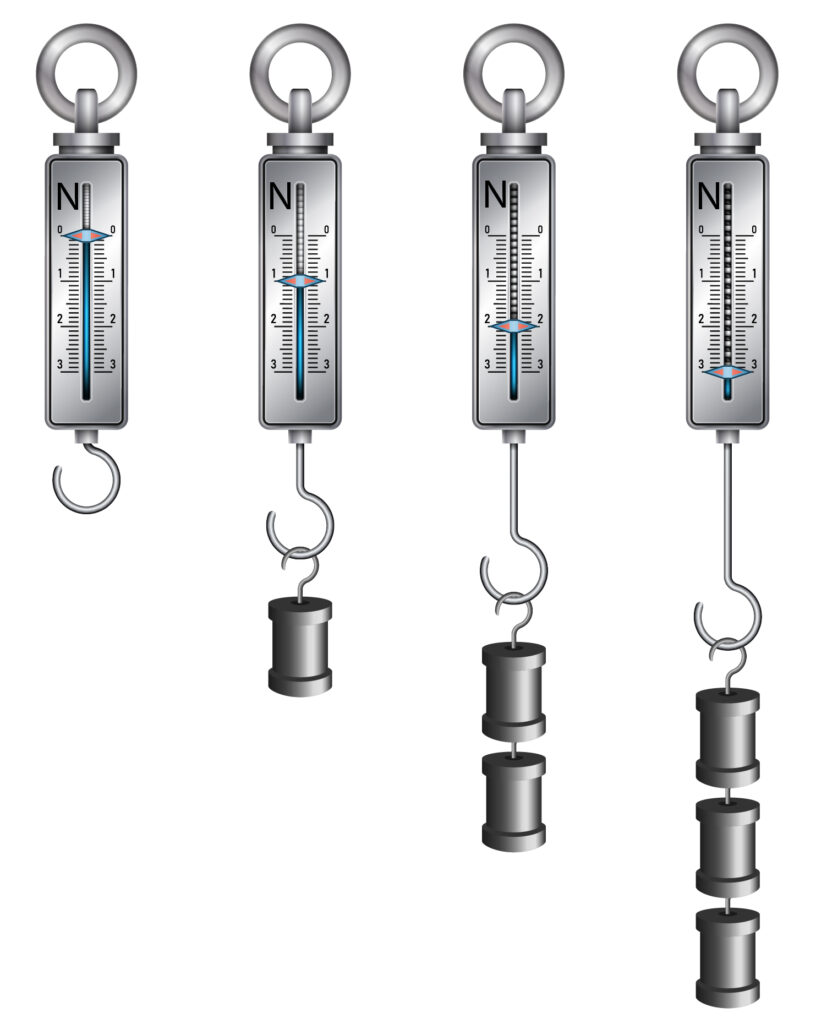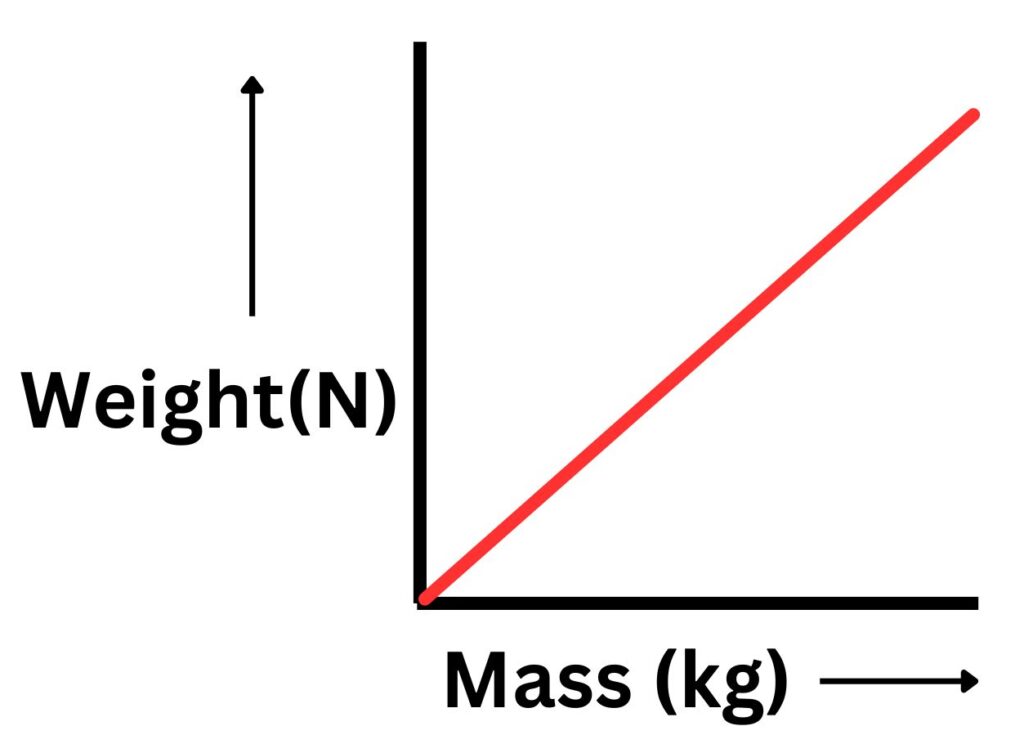GCSE Measuring Weight
Weight is the force acting on an object due to gravity.
Weight is measured in Newtons,N
The weight of an object may be considered to act at a single point referred to as the object’s ‘centre of mass’.
The weight of an object can be measured using a spring balance, or Newtonmeter.
Newtonmeter or Spring balance.
A Newtonmeter is an alternative name for a spring balance. The spring balances below are calibrated, that means that they have been checked by a standard that they are accurate.

Each single weight is 10g or 0.01kg. As the mass added increases, so does the weight. This means that both mass and weight are directly proportional.

Practice Questions
1. State the definition of weight
2. What is meant by the term calibration
3. State the relationship between mass and weight
4. State the meaning of the term centre of mass
5. What does a spring balance measure?
Absorption and Emission of EM Radiation
JJ Thomson and Plum pudding model
Ernest Rutherford and the Nuclear Model
Niels Bohr changing the Nuclear Model
Discovering the Proton and Neutron
Measuring radiation from radioactivity
Radiation types and properties
Random nature of radioactive decay
Radioactive contamination or irradiation
Hazards of contamination and irradiation
Studies on the effects of radiation on humans
Different half lives of radioactive isotopes
Nuclear Fission Chain Reaction
Writing nuclear fission equations